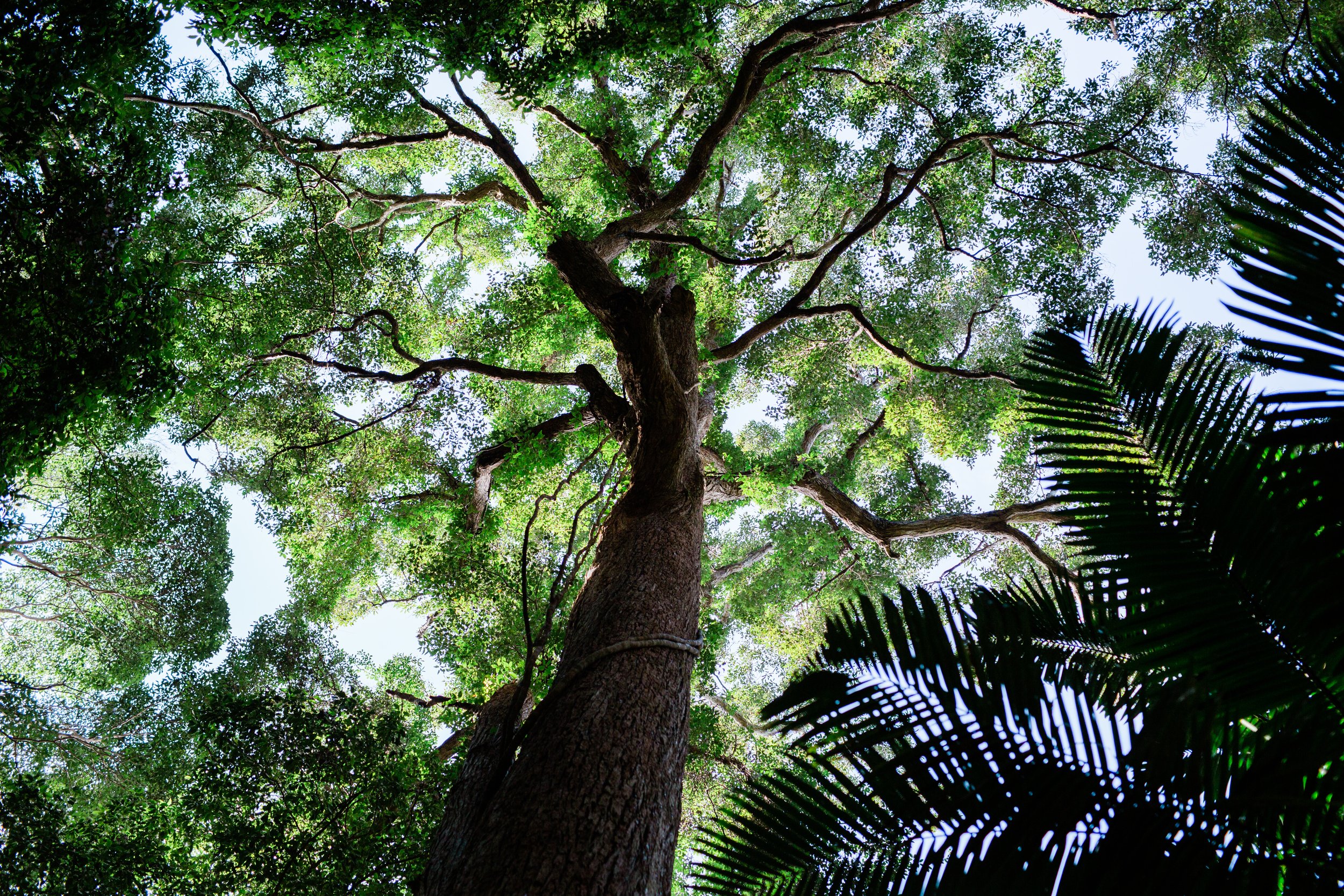
Rainforests
Picture towering pines, satinay trees boasting three-meter girths, rare and ancient king ferns, eucalypt forests with their distinctive pendulous leaves, lemon-scented swamp vegetation, and dwarfed heathland shrubs adorned with a profusion of flowers—all flourishing on an island made entirely of sand.
Two of K’gari's unique features are its diversity of vegetation and its ability to sustain this vegetation in sand, a soil that is notoriously low in nutrients essential to plant growth. Plants growing on the dunes can obtain their nutrients (other than nitrogen) from only two sources - rain and sand.
The sand is coated with mineral compounds such as iron and aluminium oxides. Near the shore, the air contains nutrients from sea spray which are deposited on the sand. In a symbiotic relationship, fungi in the sand make these nutrients available to the plants. These in turn supply various organic compounds to the fungi which, having no chlorophyll, cannot synthesise for themselves.
Rainforests grow on sand dunes at the world's highest elevation, more than 200 metres. Subtropical rainforests can be found in the centre of the island in the moist gullies. These communities have a thick canopy of leaves allowing minimal light to reach the forest floor. This causes the trees to grow tall and straight to reach the sunlight, making the trees suitable for logging. Kauri pine and the piccabeen palm are common species found in the rainforests.
The Duke and Duchess of Sussex visited K'gari on 22 October 2018, experiencing the island’s breathtaking natural beauty first-hand. Learn more about their visit and K’gari’s royal rainforest.
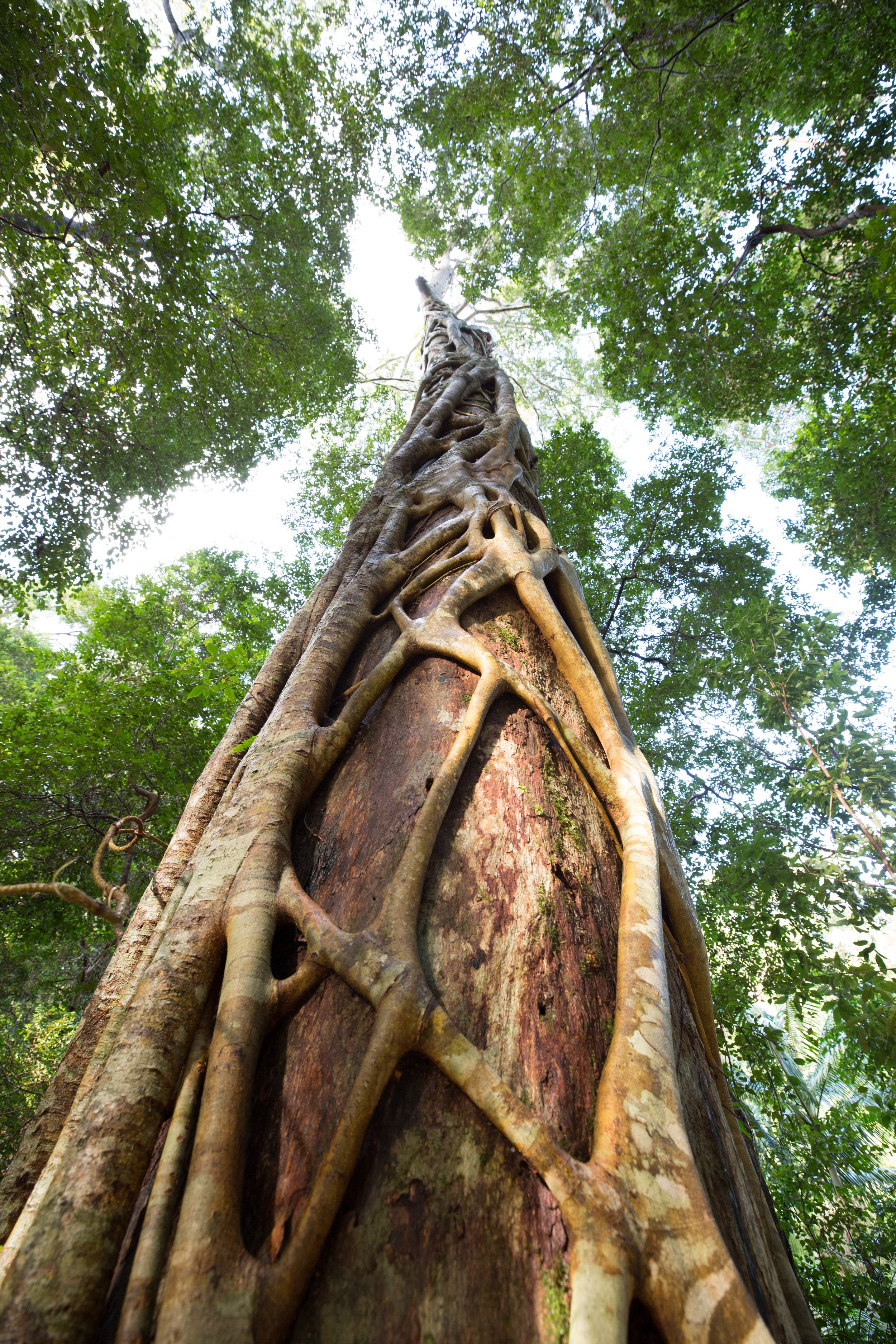
Strangler Fig

Yellow Pea Flowers
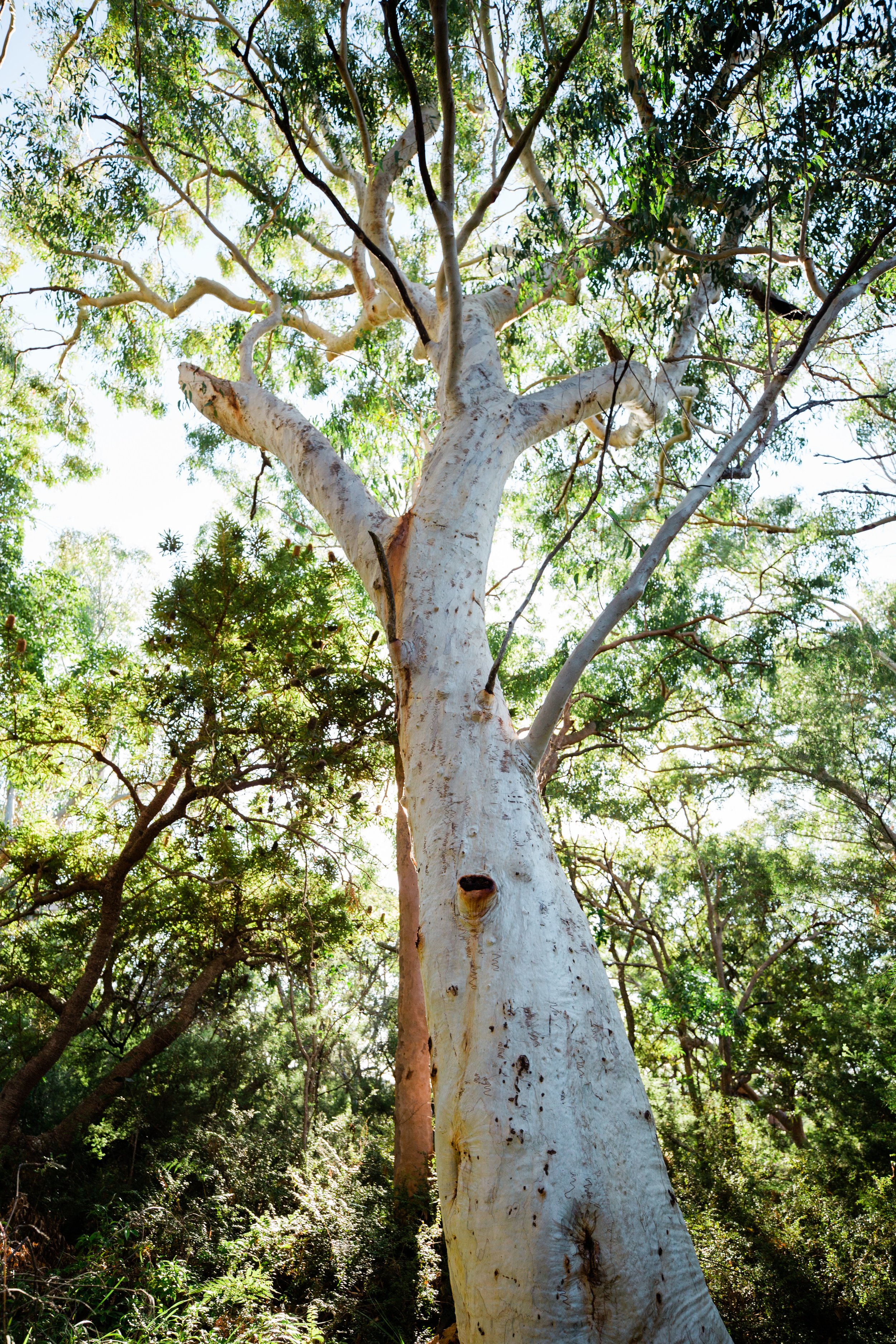
Scribbly Gum
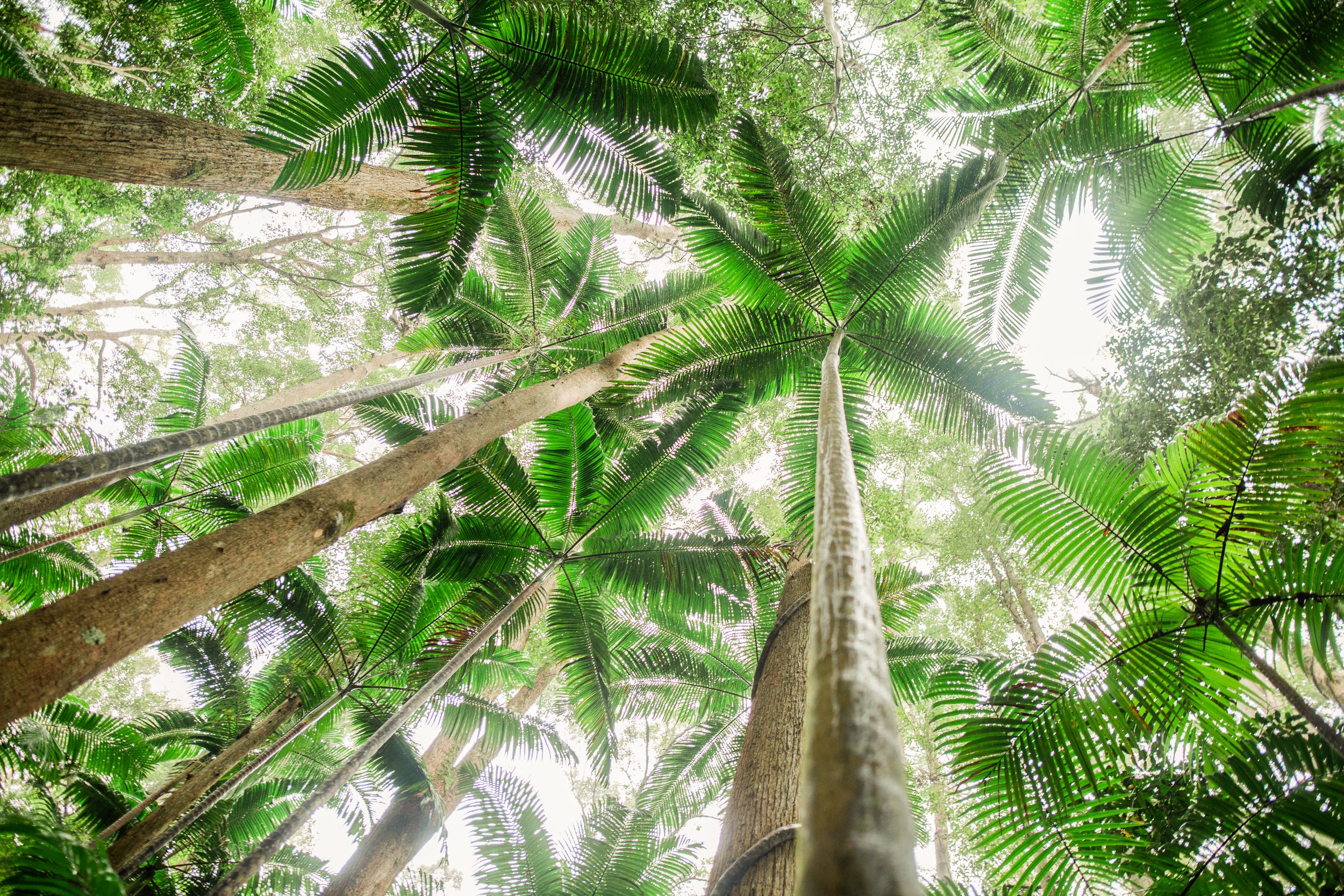
Piccabeen Palms
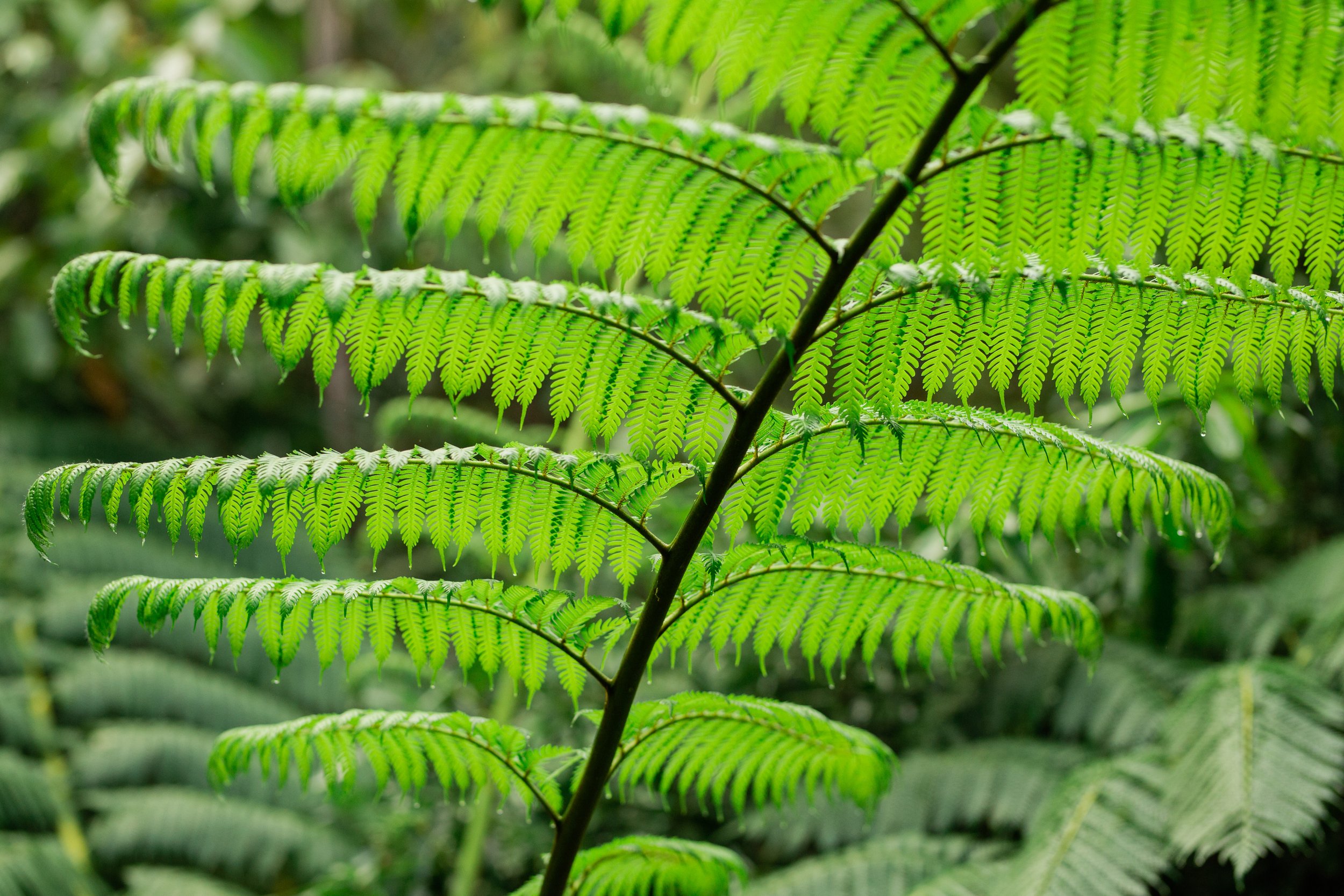
King Fern

Satinay Trees
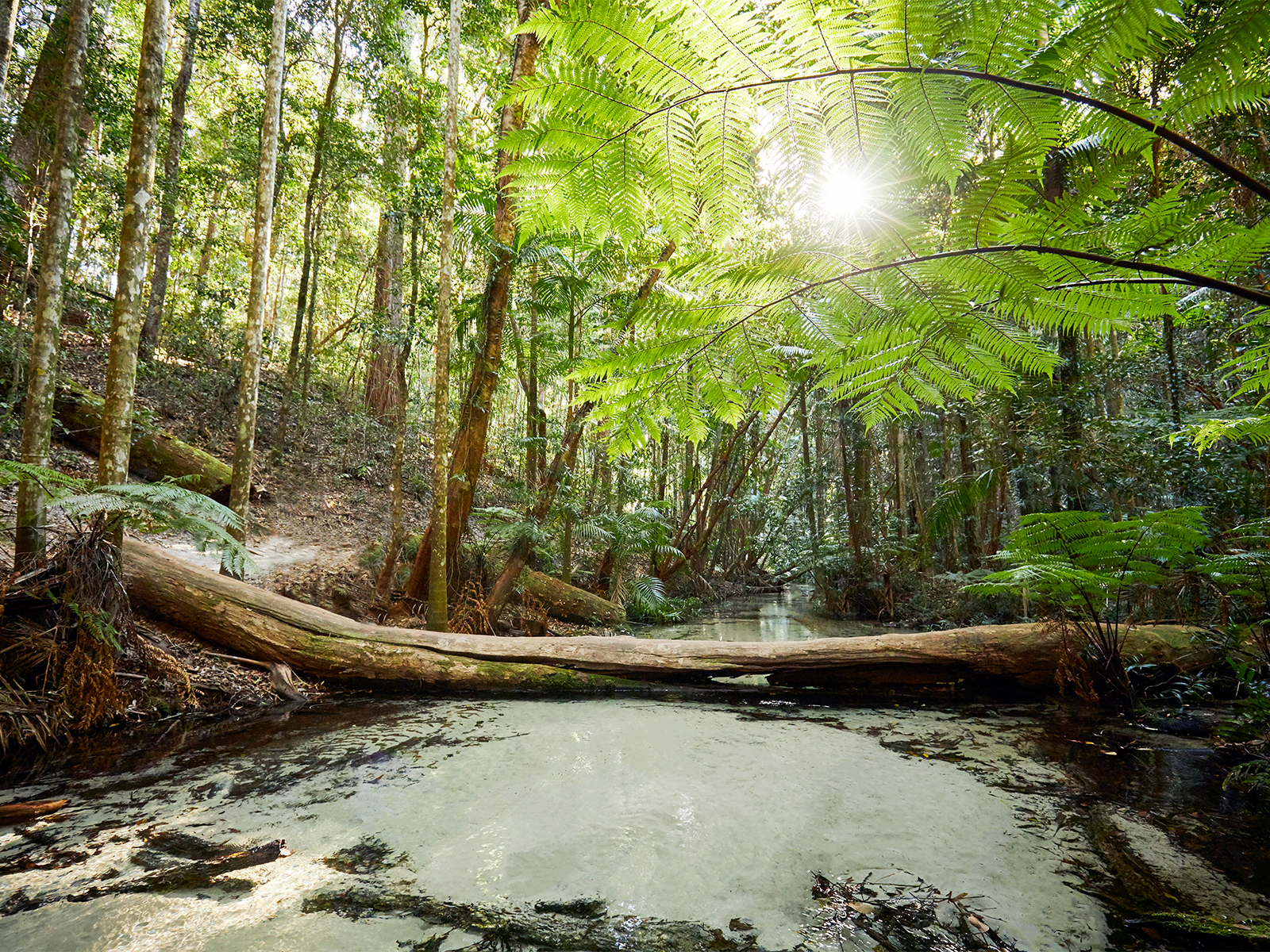
Wanggoolba Creek